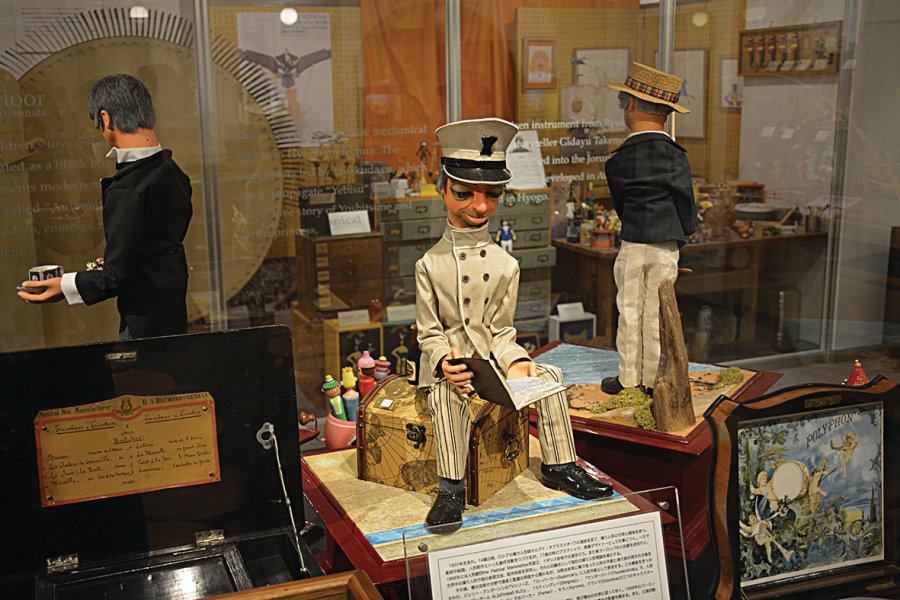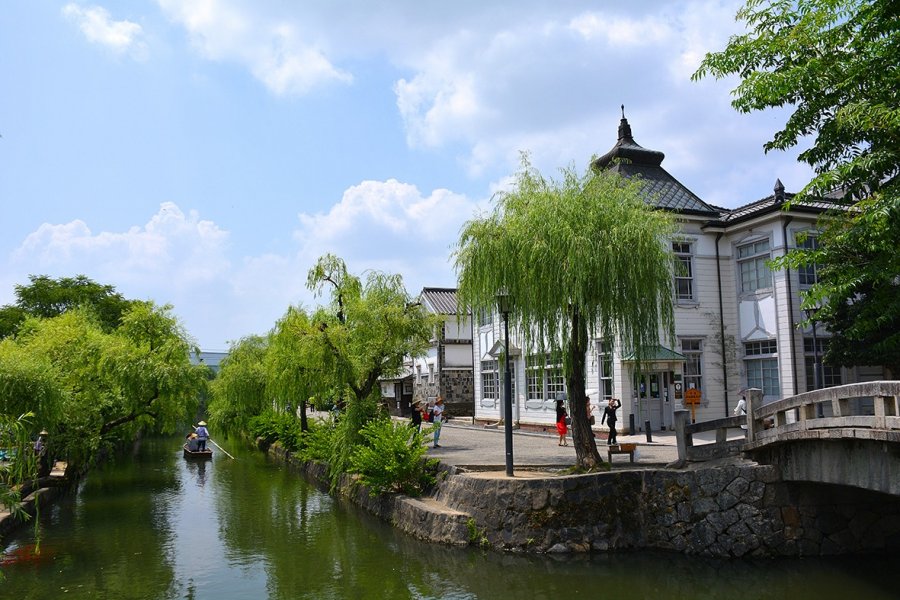Travel Guide Kurashiki
Find an accommodation
Advertising
The city, which lies in the southwestern part of Okayama Prefecture, is a gateway to the Seto Inland Sea. Spared during the Second World War, the historic district of Kurashiki Bikan has kept its famous townscape intact. It is listed as an important preservation area for its traditional building complexes. The sake warehouses and rice granaries(kura) are remnants of a bygone era. There is a myth that these old buildings, where goods were stored, were called "kurashikichi", which is said to have given the town its name, Kurashiki. These are brown brick houses with black tile roofs, which can be found in many places in Chūgoku. For two hundred years, under the direct control of the Shogun government, the historic district of Bikan developed as a distribution point for goods. The city's most beautiful buildings are naturally found along the Kurashiki Canal, itself lined with weeping willows. The warehouses, which stand along the Kurashiki-gawa River, were once used to transport goods by water to another port. These warehouses still bear witness to the prosperity of the past. The former residence of the Ōhara family, which can be visited today, or the Mingei-kan Kurashiki Folk Art Museum, are perfect examples. But they are not the only ones. Other buildings, built in the 19th century, also contribute to the beauty of the city. The galleries and museums are all located along the old canal. Considering the crowds, it will be best to walk there outside weekends or Japanese holidays. Thevery first private museum of Western art in Japan is the Ōhara Art Museum. With its Greek-style architecture, very bold for its time, it made a huge splash.It was founded in 1930 and became the first museum devoted to Western art in Japan. In the main building are exhibited sculptures by Rodin, paintings by the greatest Western painters. There are works by Modigliani, Utrillo, El Greco, Renoir... and more contemporary works by Picasso, Jackson Pollock, Andy Warhol. Several other museums and galleries are established along the Kurashiki canal; the Kōko-kan archaeological museum or the Japanese toy museum which presents many toys from the end of the Edo era to today. The banks of the canal are the scene of charming scenes to the delight of amateur photographers. Indeed, many young Japanese couples come in traditional dress.At the end of the day, when it is less hot and the sun is declining, we advise you to take a little trip on the Kurashiki canal. This timeless walk only lasts about twenty minutes but it offers a unique view of the white walls of the city in the setting light.
What to visit Kurashiki?
Advertising
Suggested addresses Kurashiki
Weather at the moment
Advertising
Organize your trip with our partners Kurashiki
Transportation
Book your plane tickets
Car Rental
Boat rental
Accommodation & stays
Find a hotel
Holiday rental
Find your campsite
Tailor-made trip
Immersion travel
Services / On site
Activities & visits
Find a doctor














